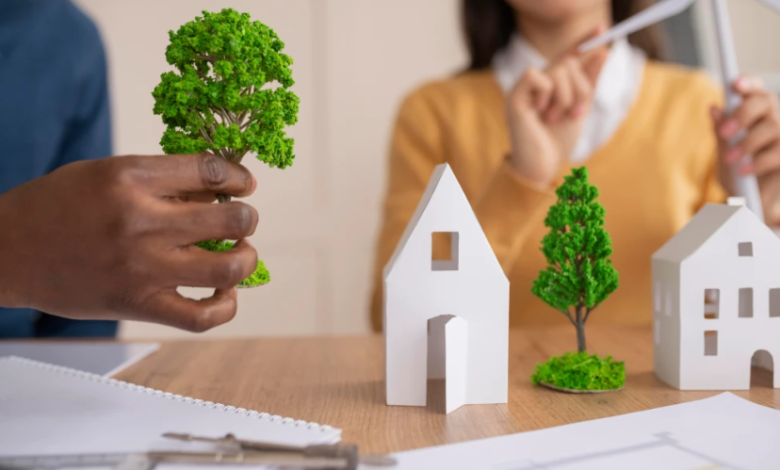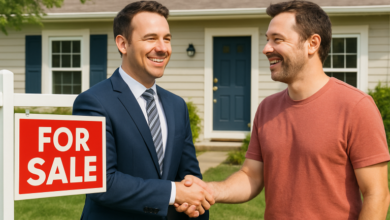SUSTAINABILITY BUILDING IN MODERN REAL ESTATE

Understanding Sustainability Building
In today’s rapidly urbanizing world, the concept of sustainability building has become central to real estate development. This approach integrates environmental responsibility with architectural innovation to create structures that are energy-efficient, resource-saving, and eco-friendly. With growing environmental concerns, real estate professionals, architects, and developers are increasingly leaning towards methods that reduce environmental footprints without compromising functionality or aesthetics.
Importance Of Sustainable Practices In Real Estate
The real estate sector has historically contributed significantly to global carbon emissions and energy consumption. As climate change intensifies, the need for change in construction and infrastructure has grown louder. sustainability building that reduce waste, minimize emissions, and promote long-term energy efficiency. These include using renewable energy, incorporating natural lighting, and installing efficient HVAC systems.
Real estate firms now recognize the long-term benefits — not only in operational savings but also in attracting environmentally conscious tenants and buyers.
Features Of A Sustainability Building
A sustainability building is more than just a green roof or solar panels. It is a combination of systems and materials designed to reduce environmental impact across its entire lifecycle.
Some common features include:
- Energy efficiency: Installation of LED lighting, energy-efficient appliances, and thermal insulation
- Water conservation: Rainwater harvesting systems and low-flow plumbing
- Sustainable materials: Use of recycled or low-impact construction materials
- Indoor environmental quality: Non-toxic paints, improved air circulation, and natural daylight usage
These features not only contribute to sustainability but also improve occupant health and comfort.
Benefits Of Adopting Sustainability Building
There are multiple benefits to incorporating sustainability building in real estate:
- Cost savings: Reduced energy and water usage leads to lower utility bills
- Increased property value: Sustainable buildings often command higher market prices
- Compliance with regulations: Governments are offering incentives for green building initiatives
- Positive public image: Companies that adopt sustainable practices improve their brand reputation
- Healthier living environments: Improved air quality and daylight contribute to better physical and mental health
Challenges In Implementing Sustainability Building
Despite its benefits, several challenges hinder the widespread adoption of sustainability building. High upfront costs, lack of awareness, and limited access to eco-friendly materials are major roadblocks.
Moreover, in some regions, there is a shortage of skilled professionals who understand green architecture and sustainable design. This lack of expertise can lead to poorly executed projects that don’t meet global standards.
See also: Transforming Industries: How Top Enterprise AI Platforms Enhance Business Efficiency
The Role Of Technology In Sustainability Building
Technology has played a transformative role in making sustainability building more accessible and efficient. Tools like Building Information Modeling (BIM) help architects simulate energy consumption and reduce construction waste.
Smart home technologies such as automated lighting, heating, and cooling systems also contribute to reducing energy consumption. Furthermore, the integration of Internet of Things (IoT) allows for real-time monitoring of building performance, enabling timely maintenance and efficiency improvements.
Green Certifications In Real Estate
To ensure that buildings meet sustainability benchmarks, several international certifications have been developed. These include:
- LEED (Leadership in Energy and Environmental Design)
- BREEAM (Building Research Establishment Environmental Assessment Method)
- WELL Building Standard
These certifications evaluate buildings on energy use, water efficiency, air quality, and more. Developers who meet these standards are more likely to gain trust and attract investment.
Sustainability Building Trends In Real Estate
The trend of sustainability building is shaping future developments in real estate. Some emerging trends include:
- Net-zero energy buildings: Buildings that produce as much energy as they consume
- Biophilic design: Incorporation of natural elements such as green walls and open courtyards
- Adaptive reuse: Transforming old buildings into sustainable ones instead of demolishing them
- 3D-printed construction: Use of sustainable and recyclable materials through 3D printing
These trends are helping to reduce environmental harm while fostering innovative architectural practices.
Government Policies Supporting Sustainability
Many governments across the globe are introducing incentives to promote sustainability building. Tax breaks, fast-track approvals, and grants for green projects are encouraging developers to make environmentally conscious decisions.
In some countries, building codes are being revised to include mandatory sustainable elements such as energy audits, insulation standards, and waste management protocols. These initiatives aim to create a built environment that aligns with global sustainability goals.
Future Of Sustainability Building In Real Estate
The future of sustainability building is bright. As awareness continues to grow, sustainable real estate will become the norm rather than the exception.
Developers are increasingly realizing that sustainability is not a trend but a necessity for long-term success. With technological advancements, cost reductions, and regulatory support, the real estate sector is well-positioned to lead the charge toward a greener future.
In coming years, we can expect the integration of artificial intelligence and machine learning into building management systems, further optimizing resource consumption and maintenance. Moreover, the concept of smart cities, powered by sustainable buildings, will become a reality in many parts of the world.
Conclusion
sustainability building is more than an environmental initiative; it is a strategic approach to future-proofing real estate assets. As the world pivots toward more responsible living, the real estate industry must embrace sustainable construction and development practices.
By addressing the challenges and leveraging available technologies, the real estate sector can make significant strides in reducing its environmental impact while offering long-lasting benefits to stakeholders.
The transition to sustainability building is not only good for the planet but also essential for the economic viability of future real estate developments.




